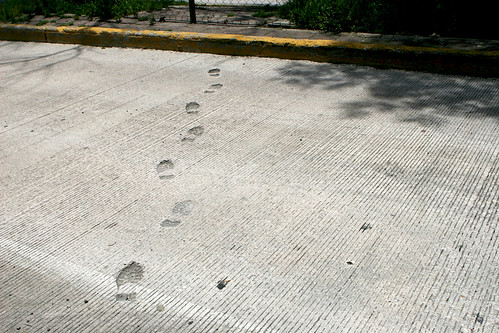I’ve been thinking a lot throughout the spring about translating a face-to-face course into an online format. I have done this myself in the past. A few summers ago, I adjuncted a graduate course centered on thematic teaching and developing thematic units as a face-to-face course. Two years later, the course was to be offered again, but in an online format. It took a lot of thought to make that switch happen. Some of the activities that worked well in a classroom didn’t work as well in an online course that was largely text-based.
It is challenging to have to rethink a course this way, and I found it to be an interesting learning experience for me as well. Honestly, it was some trial and error for me, which was not all bad—often we learn more from our mistakes than our successes! Some of the things I tried (different texts, peer review for lesson plans underway, incorporating video) worked fairly well. Other things didn’t work as well—particularly the way I structured some small group discussions. (The real issue here was that I just grouped students together based on the grade levels they teach…rather than taking other factors into account. In particular I found that getting to know students’ work habits and schedule of participation and using this as a basis for forming groups really helped to make a better experience for everyone.)
Because I learned some things through making mistakes, subsequent courses I’ve taught online have gone better than ever before. I’m still learning—I won’t claim all expertise in teaching online—though I will say that I’m better now than I was four years ago when I was first teaching online.
But here’s the thing: I know I can still get better. And I want to get better. So I’m looking for opportunities to keep learning.

This summer I’m taking courses for my graduate work that focus on online teaching and learning. One of them is even titled “Online Teaching for Adult Learners”…which is what I do in the courses I teach for our M.Ed. program. In the course, we are using Ko and Rossen’s book Teaching Online: A Practical Guide as one of our main texts. I have found it very helpful, and I’m feeling both affirmed and challenged. I’m feeling affirmed in some of the things I discovered through trial and error that are actually best practices for online teaching. I’m feeling challenged in some things that I know I can do better the next time I teach a course online!
So, you may be wondering, what do Ko and Rossen—these experts in online teaching—have to say about translating a face-to-face course to an online setting? Lots, actually. A sampling:
- “Putting your class online doesn’t mean copying your lectures and syllabus word for word” (p. 45).
- “Learning objectives and the core syllabus remain the same as in the on-site version” (p. 46).
- “If you simply post your lectures and syllabus on the Web, you haven’t necessarily created a viable tool for your students” (p. 52).
- “The move to an online format offers you opportunities to try out new methods and approaches. Preserving the quality of your course need not mean finding an exact translation of what you’ve always done in the past” (p. 61).
- “All types of group activities, from peer review to true cooperative learning exercises are possible in the online environment…[but] group organization and working procedures take longer to develop in the online environment” (p. 77).
Admittedly, this is just a selection of soundbites to illustrate their perspective. Throughout the book, Ko and Rossen give very practical advice for how to make the shift. They discuss diverse issues such as:
- how to structure online presentations of content,
- how to interact and communicate with individuals and small groups to engage them and foster deeper learning,
- how to arrange group-oriented work,
- how to address student-generated content and how to have them share their work,
- how to support students conducting research in an online course, and
- how to assess student learning, including suggestions for a wide array of options.
I'm sure I'll have more posts on this topic as the course rolls on. If you, dear reader, have specific questions, please don't hesitate to comment and ask them. I'll give answers as I can, and I'll share what I've learned.
Reference:
Ko, S. & Rossen, S. (2010). Teaching online: A practical guide. 3rd Ed. New York, NY: Routledge.




